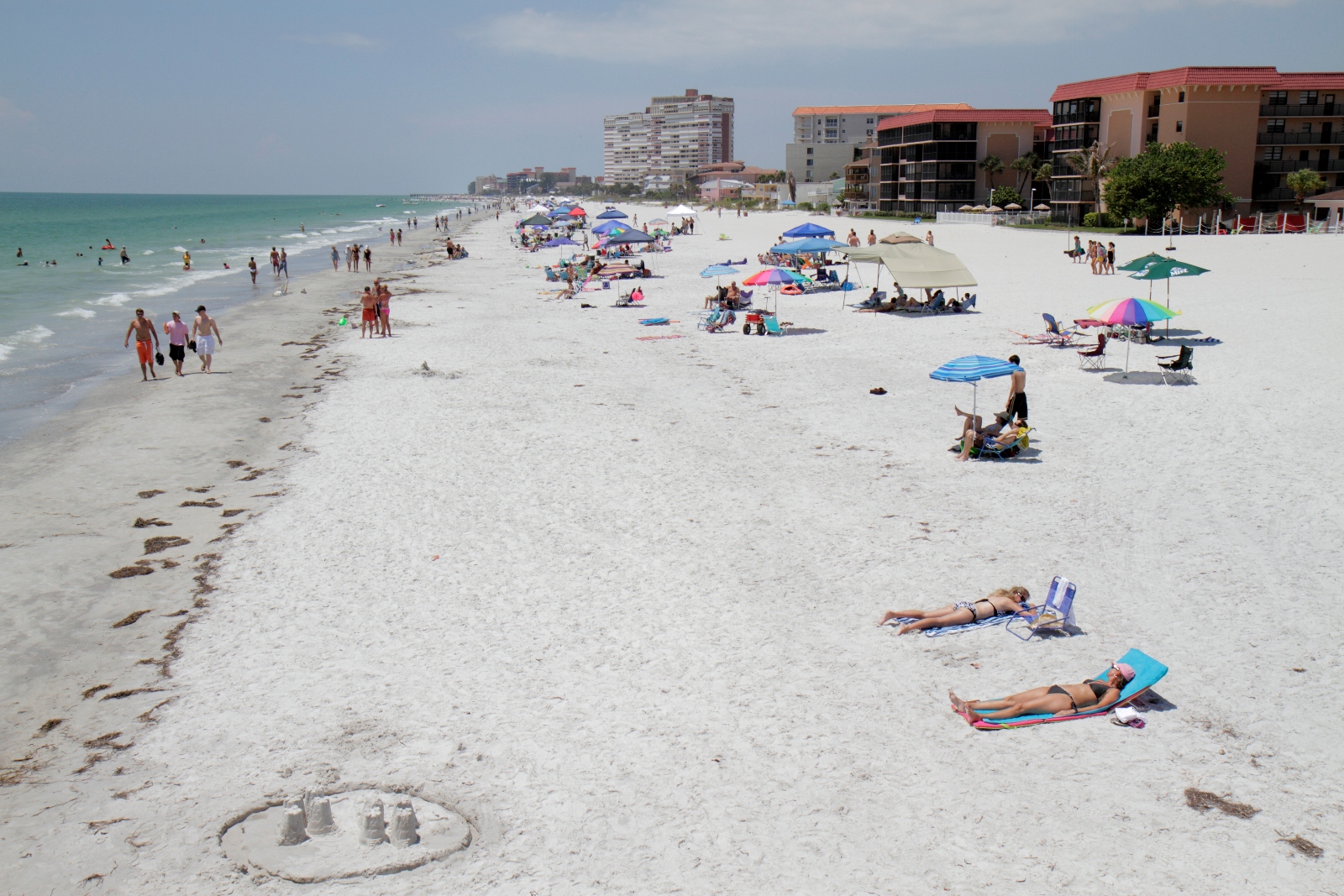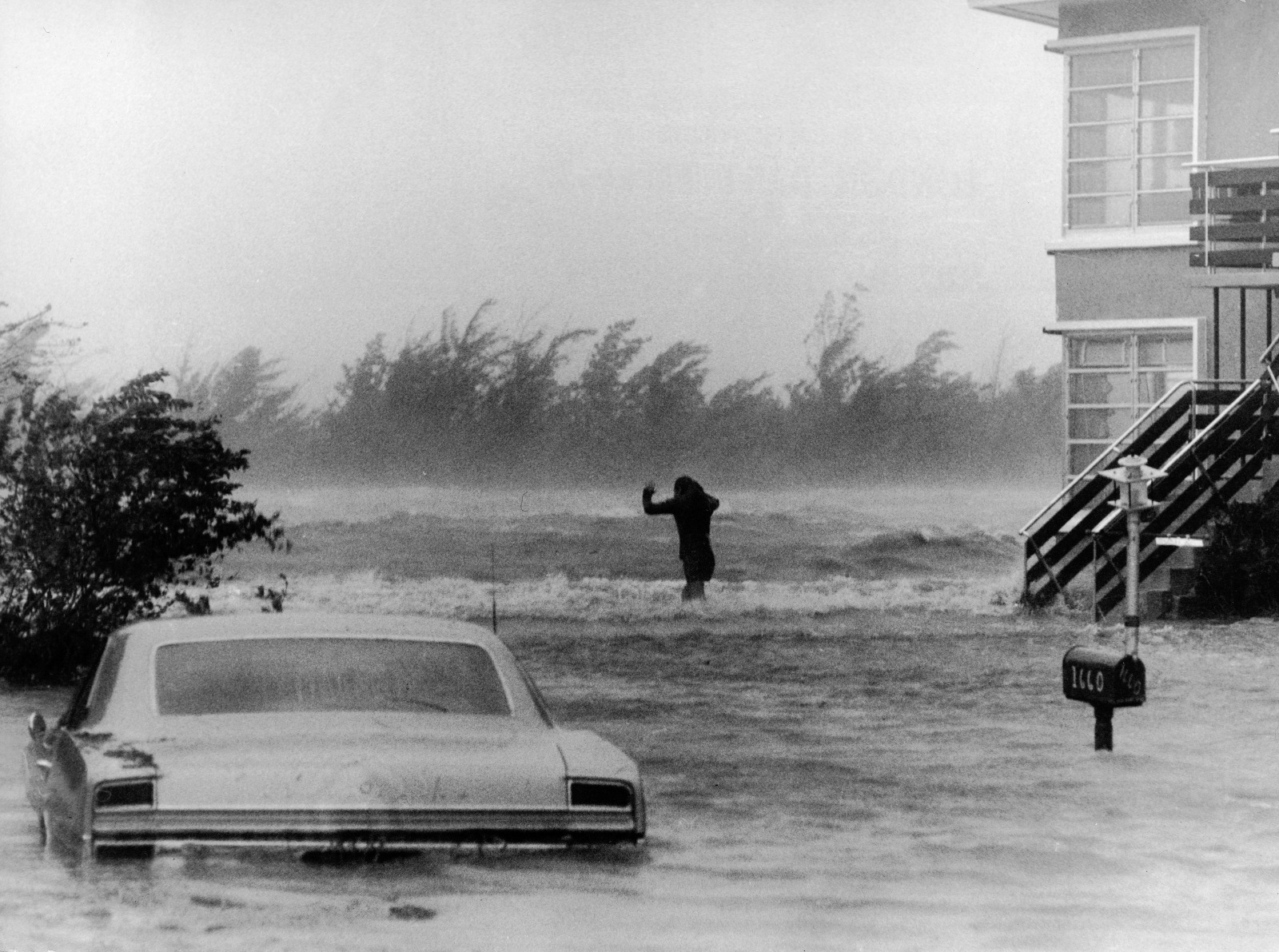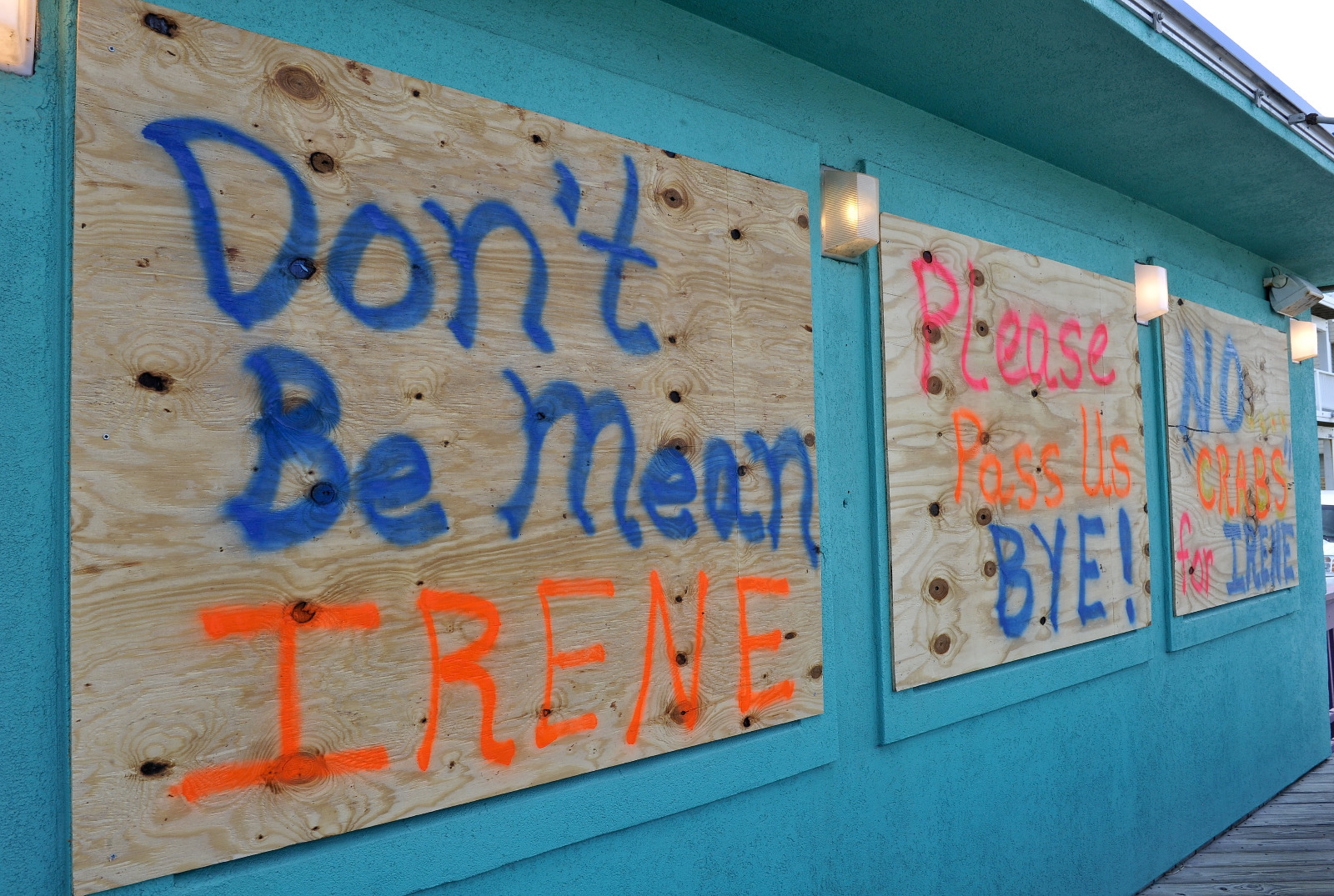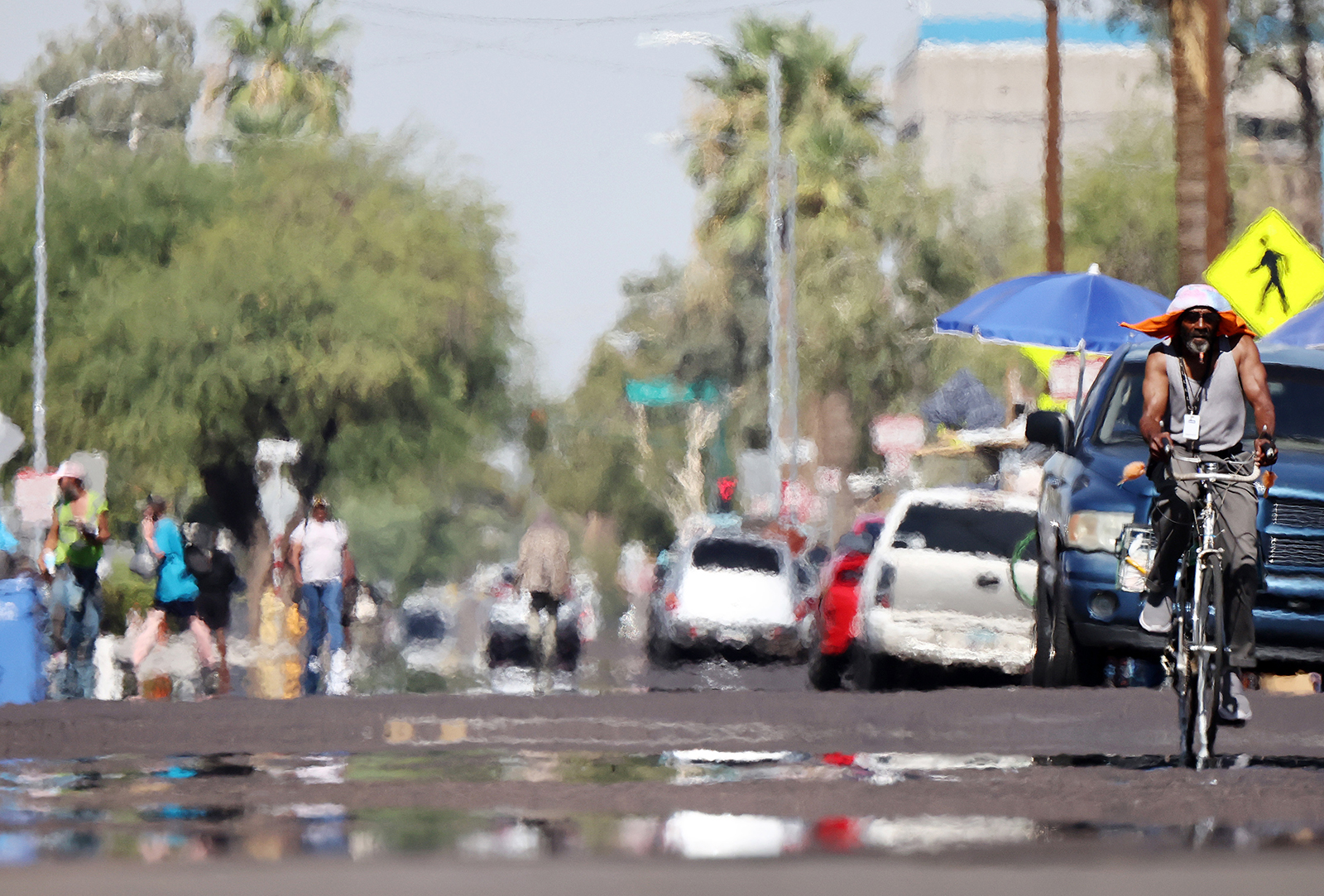Before you head to the mall for that new summer trend, take a second look…
The post DIY Summer Style Ideas appeared first on Earth911.

Before you head to the mall for that new summer trend, take a second look…
The post DIY Summer Style Ideas appeared first on Earth911.
The future is not written, we can make a better, sustainable future for our children…
The post Best of Earth911 Podcast: Author Chunka Mui on Building a Perfect Future for Our Children appeared first on Earth911.
A new report from the National Energy Assistance Directors Association (NEADA) and the Center for Energy Poverty and Climate (CEPC) anticipates that households in the U.S. will see about a 7.9% increase in their electric bills this summer as temperatures increase. This summer also follows the record-hot summer of 2023.
Households could pay an average of $719 from June through September, according to the report. By comparison, U.S. households paid $661 on average in electricity during June through September 2023. Ten years ago, the average payment for this same time period (June through September) was around $476, NEADA reported.
For low-income households, the increasing electric bill prices will put families at higher risks of extreme heat. For one, low-income households are more likely to live in heat island areas and have less access to methods of cooling that are affordable, NEADA reported. There have also been $2 billion of cuts in funding from the federal Low Income Home Energy Assistance Program (LIHEAP) from 2023 to 2024, despite last summer being the hottest on record.
“We must treat access to cooling like we treat access to heating. We must develop programs that enable low-income families to stay safe and in their homes during extreme temperatures,” Mark Wolfe, lead author of the report and executive director of NEADA, said in a press release. “Our current strategies, including access to cooling centers, may have been appropriate when they were designed in the 1970s when summer temperatures were lower and heat waves were sporadic. They are inadequate to provide relief from the record-breaking high temperatures and continuous heat waves that have become our new normal in the summer months.”
About one million households are expected to lose access to the heating and cooling benefits provided through LIHEAP. Most of the program’s funding goes toward heating, leaving more families vulnerable to the extreme heat expected for this summer.
NEADA and CEPC are asking Congress to restore funding to LIHEAP ahead of this summer, or at the latest, before summer 2025. Further, they are recommending that states establish shut-off protections and invest in improving the energy-efficiency of low-income households through retrofitting, solar panels and heat pumps. As NEADA pointed out, these upgrades could be made possible through the High Efficiency Electric Home Rebate Program (HEEHRA), part of the Inflation Reduction Act.
“If people can’t afford air conditioners in the summer, we shouldn’t be surprised that people become ill and go to hospitals,” Wolfe told The Guardian. “Now with extended heatwaves, more families need access to affordable cooling.”
The post U.S. Electric Bills Could Increase 8% This Summer Amid Rising Temperatures appeared first on EcoWatch.
Lisa Hendrickson is almost out of sand.
Hendrickson is the mayor of Redington Shores, Florida, a well-heeled beach town in Pinellas County. Her town occupies a small section of a razor-thin barrier island that stretches down the western side of the sprawling Tampa Bay metro area, dividing cities like Tampa and St. Petersburg from the Gulf of Mexico. Many of her constituents have an uninterrupted view of the ocean.
The town’s only protection from the Gulf of Mexico’s increasingly erratic storms is a pristine beach that draws millions of tourists every year — but that beach is disappearing fast. A series of storms, culminating in last fall’s Hurricane Idalia, have eroded most of the sand that protects Redington Shores and the towns around it, leaving residents just one big wave away from water overtaking their homes.
This perilous situation is the result of a standoff between local residents and the U.S. Army Corps of Engineers, the federal agency that handles flood prevention and protects many of the nation’s beaches. The Corps often rebuilds eroded beaches by hauling in thousands of tons of sand, but the agency is refusing to deliver $42 million of new sand to Pinellas County unless the area’s coastal property owners grant public access to the slivers of beach behind their homes. Hundreds of these property owners, however, are in turn refusing to sign documents that grant these points of access, which are known as easements. The faceoff has brought the area’s storm recovery to a near standstill.
This standoff highlights growing tensions between the federal government and homeowners in coastal areas that are threatened by climate change. As sea levels have risen and strong storms have caused greater damage than ever before, the costs of protecting and insuring beach fronts in Florida and other states have increased rapidly. Agencies like the Corps have had to weigh these costs against the interests of property owners in places like the Tampa Bay region. When those interests come into conflict, populated coastal areas can be left exposed or uninsured, making them sitting ducks for the next climate-fueled storm.
“Our coastlines are the first line of defense against storms, and our Gulf beaches are just eroding away,” Hendrickson told Grist. “I don’t know where we go with it now, or how we come together to work through it.”
The Corps put the easement policy in place decades ago to ensure that it didn’t spend public money to restore private beaches, but the agency didn’t begin enforcing the rule in earnest until after Superstorm Sandy in 2012. When the Corps tried to replace disintegrated beaches in New Jersey, it discovered that it didn’t have all the easements it needed. Local governments spent years trying to obtain them, and the state government had to use eminent domain to seize portions of the beach in order to satisfy the agency.
In the years since, the agency has warned Pinellas County and other local governments that they won’t get any more sand unless they get easements from all the property owners on their beaches. The Corps says it first raised the issue with Pinellas back in 2017, but tensions started rising last year after Idalia eroded the area’s beaches to a dangerous degree, creating a desperate need for new protective sand.
The Corps requires that easements be “perpetual,” which means that the public will always be able to access the beach area behind an owner’s property. The agency says this is only so that it has the ability to help out after future storms: When a hurricane wipes out a beach, the Corps often swoops in to pay for an emergency beach replenishment just weeks later, ensuring homes don’t wash away. The agency says that it can’t commit to doing this emergency work unless it can be sure that beach access will remain public for good. It also says that it needs easements from all property owners in a given area, because nourishment projects don’t work unless they’re continuous along an entire stretch of sand.
Pinellas County officials tried their best to obtain these easements, even going from door to door and pleading with residents to “sign for sand.” Nevertheless, around half of the 461 property owners along the barrier island have refused to grant them. County officials are still urging residents to submit, but they have obtained few new easements since late last year.
The strange thing about the easement controversy is that these waterfront residents don’t fully own the beaches behind their homes — in fact, most of the county’s beaches are already public. State law provides that all Florida beaches with artificial sand are public up to the “erosion control line,” which is about the same as that which marks high tide. In other words, everything from the water to the high tide line is open for anyone to walk, tan, or spread a blanket. The land in dispute between the Corps and the homeowners is only the section of sand between the backside of a beach house and the high tide line, which in many cases is just a few dozen feet.
“For most of the project, the beach is wide open to the public,” said John Bishop, Pinellas County’s coastal management coordinator. “A lot of the easement areas aren’t even on the beach, they’re in the dune behind the beach.”
Owners’ reasons for refusing easements are numerous, but most cite a fear that granting public access to the sand behind their property will encourage tourists to venture up on their dunes or sit on the sea walls behind their homes. Sure, they can’t stop tourists and beachgoers from using the beach that sits between the erosion line and the water — but they don’t want them coming any closer.
Even those property owners who have granted their easements haven’t yet seen any benefit from doing so, since the Corps won’t deliver sand until everyone complies.
Andrew Youngman, the property manager at the Sea Oats resort condominium in Redington Shores, says the board of his 40-unit building was initially eager to grant the Corps an easement for beach nourishment last year. But when residents learned they wouldn’t get new sand unless the county secured easements from all property owners, they figured it would never happen, so they never finished the paperwork. Since then, Youngman has watched the area around his property erode.
“We’re probably in the best shape in the vicinity, because we have a dune of our own out there,” Youngman told Grist. “Everyone else is just flat from their building to the water.”

The local government and the Army Corps of Engineers have kept up this staring contest for almost a year now, and some political heavyweights have gotten involved on the county’s side. Senators Rick Scott and Marco Rubio and Representative Anna Paulina Luna, all Republicans, have accused the Corps of holding up the beach project on bureaucratic grounds. Last month Scott sent a letter to the Corps saying that his constituents “have seen enough inaction.” The letter urged the Corps to relax its easement policy and said that “further delays on these projects could cause catastrophic damage to … coastal communities.”
In response to questions from Grist, a spokesperson for the Corps gave no indication that the agency will budge on its policy, which it has begun to enforce elsewhere in Florida and in other coastal states like South Carolina.
Even when Pinellas County tried to obtain separate temporary easements to build new emergency dunes at the top of its beaches, many residents still refused, in part out of a concern that new dunes would block their ocean views. This further stalemate with homeowners has forced the county to build a piecemeal dune behind coastal properties, leaving holes in front of the homes and hotels where the owners didn’t want to grant an easement.
This broken dune won’t do much come storm season, according to René Flowers, a Pinellas County commissioner who has been pushing the Corps to deliver the sand.
“When you have a break in the chain, then all of the work that you’re doing is not as impactful in protecting as it would be,” she said.
Rob Young, a professor of geology at Western Carolina University and a frequent critic of beach nourishment projects, says Pinellas County should fund the nourishment itself through sales tax increases rather than relying on the federal government to pay for new sand. He pointed out that some beach towns on the Outer Banks of North Carolina have taxed tourism to pay for sand after the federal government stopped covering the costs.
“For a lot of people, the privacy is more important to them than the risk of destruction,” he said, referring to residents who refused to grant easements. “The solution is very easy — pay for your own risk.” Young added that many nourishment projects don’t seem to be worth the money they cost. He pointed to the Jersey Shore, where a $1 million beach nourishment project washed away in just one year.
The knowledge that beach nourishment might not be a good investment doesn’t do much to help local leaders like Flowers, the Pinellas County commissioner, who is bracing herself for a hurricane season that meteorologists predict will be one of the most active in decades.
“I’m very concerned for those homeowners out there who will be impacted because perhaps their neighbor has opted not to allow access,” she said.
This story was originally published by Grist with the headline The homeowner mutiny leaving Florida cities defenseless against hurricanes on Jun 4, 2024.
Every year ahead of hurricane season’s official start in June, the National Oceanic and Atmospheric Administration releases the forecast for the Atlantic Ocean’s tempestuous season ahead. In a predictable cycle, articles start swirling in to answer familiar queries: What will these hurricanes be called? Who picks their names? Why do hurricanes get named like people, anyway? This year, the first will be named Alberto, then Beryl, Chris, Debby, and so on all the way to William, the end of the alphabet in terms of desirable letters meteorologists trust they can wrest intelligible names out of.
It’s likely that a few of these monikers will get retired, an honor bestowed upon particularly deadly, destructive storms whose reuse “on a different storm would be inappropriate for obvious reasons of sensitivity,” according to NOAA. This year’s season is predicted to be the busiest on record because of record-hot waters in the Atlantic, which can stir up stronger hurricanes, and the predicted shift from an El Niño climate pattern to a La Niña one whose weaker high-altitude winds make it easier for hurricanes to form. NOAA recently projected that 17 to 25 named storms will appear this year, with four to seven reaching the status of major hurricanes, Category 3 or higher.
The official naming of hurricanes dates back to 1953, when the U.S. Weather Bureau started labeling tropical storms to get the public’s attention, reduce confusion between storms, and indicate a level of severity (storms don’t make the cut unless their winds reach 39 miles per hour). The personality of hurricane names makes them memorable, but the practice comes with weird side effects, since names are loaded with cultural baggage that can affect how people talk about, or even prepare for, a storm barreling toward them. “Naming plays a huge impact in both how we view and respond to hazards,” said Liz Skilton, a historian at the University of Louisiana at Lafayette and the author of the book Tempest: Hurricane Naming and American Culture.
It works the other way around, too, with particularly bad hurricanes swaying what people name their babies. It’s well-documented that catastrophic storms resulted in fewer babies named Betsy (1965) and Harvey (2017), since most parents flinched at giving their kid a name associated with a catastrophe. Some even plan ahead: “Is it a bad idea to use an upcoming hurricane name?” one prospective parent asked on Reddit a couple years ago, worried the baby name they loved would be sullied. (The same names are rotated through every six years until they get retired by association with a terrible storm.) While the consensus on Reddit was that they were overthinking it, the hurricane association can cause problems for people with unique names. After Hurricane Katrina killed around 1,400 people in Louisiana and Mississippi in 2005, one trauma recovery psychologist who worked with survivors went by her initials, K.H., because introducing herself with her real name, Katrina, resulted in “a visceral reaction.”

Oddly enough, research suggests that baby names that sound similar to a much-talked hurricane tend to spike in its aftermath. One analysis found that names that began with A became 7 percent more common after Hurricane Andrew caused billions of dollars of damage in 1992, and those that started with K rose 9 percent after Hurricane Katrina. The researchers chalked it up to the influence of hearing those names so frequently, which altered what kind of names sounded good to people.
Before hurricanes got human names, they were christened haphazardly, often depending on when or where they struck, like the Great Miami Hurricane of 1926. The practice of naming hurricanes after women started with Clement Lindley Wragge, an Australian weather forecaster, in 1896. Wragge’s idea went on to inspire George R. Stewart’s hit novel in 1941, Storm, starring a meteorologist who secretly named hurricanes after girls he knew. The notion gradually caught on, and the Weather Bureau decided to test it out nationwide.
The devastating storms of the 1954 season, Carol, Edna, and Hazel, became known as “the Bad Girls of ’54.” Reporters clamored at the chance to write about storms as dramatic feminine characters, depicting them as howling, shrieking, and playing coy. “Hurricanes were not just female — they were exemplars of the worst kind of womanhood imaginable,” Skilton wrote in Tempest. There was pushback from the start, and it only intensified in the 1970s, with Roxcy Bolton leading the feminist charge. “I’m sick of reading headlines such as ‘[Hurricane] Camille Was No Lady,’” she told the press.
Skilton, who researched the language used to talk about hurricanes in thousands of newspaper articles over the decades, found that when storms struck, local reporters used the most gender-specific language. For example, when Hurricane Diane made landfall in North Carolina in 1955, 18 percent of articles in the surrounding states referred to the storm as a woman, either using she/her pronouns or nouns like “lady,” twice as often as articles in the rest of the country. Similarly, when Hurricane Camille barreled into Mississippi in 1969, articles in Gulf Coast states were more than three times as likely as other areas to specify the storm’s gender. Naming a storm imbues it with imagined, humanlike qualities, providing a target for people to express their anger “towards this natural object that has caused so much damage or destruction” where they live, Skilton said.

In 1979, a new system alternated between men and women’s names, at the order of President Jimmy Carter’s Secretary of Commerce, Juanita Kreps. At the same time, control of the naming convention was handed to the World Meteorological Organization, which still maintains the list. The Atlantic storms started rotating between English, French, and Spanish names, reflecting the blend of ancestry in the hurricane-prone Gulf Coast. It’s common practice around the world to give storms names that reflect the ethnicities in the regions they affect, said Brian McNoldy, a hurricane researcher at the University of Miami.
With names like Allen and Frederic thrown into the mix, hurricanes seemed to pick up more aggressive, even warlike personalities. Hurricane David, the first big storm in 1979, a period in which serial killers cast a shadow over the national mood, was called a “killer” that “ripped” and “razed” the coastline, diabolical and determined in “his” attack. These kinds of associations with names and gender can have real-world effects: A study in 2014 found that survey respondents perceived female-named storms as less deadly than their male counterparts, and, therefore, less worthy of evacuation. That correlation was reflected in historical death tolls, the authors found, with storms named after women causing more damage. The study received criticism, with some scholars raising questions about the methods, but Skilton said the research should lead people “to question whether the storm names are influencing us in a harmful way.”
As the climate changes, amping up hurricanes, floods, and heat waves, people are urging government agencies to give names to other kinds of severe weather, from “Winter Storm Archer” to “Heat Wave Zoe.” It’s opening up a new avenue in disaster communication — and, if history repeats itself, new complications.
This story was originally published by Grist with the headline Who’s afraid of Hurricane Debby? The peculiar importance of a storm’s name. on Jun 4, 2024.
Milk may do a body good, but it’s not so kind to the planet. Milk’s…
The post Good, Better, Best: The Climate Impacts of Milks appeared first on Earth911.
Many Americans stockpiled toilet paper, among other things, during the pandemic, and continue to overbuy…
The post We Earthlings: Do You Use Too Much Toilet Paper? appeared first on Earth911.

A new solar power project that will break ground in the Mojave Desert, near two Kern County towns in California, will require thousands of Joshua trees (Yucca brevifolia) to be removed. The project is also expected to destroy a habitat for desert tortoises (Gopherus agassizii), California’s state reptile and a threatened species.

The Aratina Solar Center project, developed by Avantus, is slated to span 2,300 acres in Boron, California and has already been revised once due to local complaints. According to the project website, the solar power site was redesigned to be better disguised from local residents.
But locals are still concerned about how this project can affect Boron and another nearby town, Desert Lake, in addition to the environmental impacts.
A study on the project highlighted that the area’s soil contains fungal pathogens that can cause valley fever, and now, residents are concerned about how construction could spread these pathogens and other particulate matter by stirring up dust into the air.
“How are kids going to be able to play outside?” Melanie Richardson, a local resident and nurse who has children that attend nearby schools, told the Los Angeles Times. “So many people from our community were begging them not to approve this project, and they passed it regardless.”
The clean energy project, which is expected to power 180,000 homes — with that power estimated to be for wealthy residents along the coast, the Los Angeles Times reported — could also have lasting impacts on the desert ecosystem.
Landscape clearing is expected to begin today, June 3, according to an anonymous source that shared information with the Los Angeles Times. There are 4,722 Joshua trees on the planned project site that could be removed.
According to the project website, Avantus said the new solar project will “offset about 860,000 metric tons of carbon emissions every year, the annual equivalent to planting 14 million trees.” Kern County officials also told the Los Angeles Times that Avantus provided $1.4 million in funding for Joshua tree protections in areas outside of their development site.
Although petitions to protect Joshua trees under the Endangered Species Act in recent years have failed, the plants do have some protections under the Western Joshua Tree Conservation Act, which took effect in July 2023. As the Los Angeles Times reported, the solar project was approved before the act took effect.
The desert tortoises, which are the California state reptile, have declined in population in the state by about 50% over the past 20 years, are considered threatened both by the state and under the federal Endangered Species Act. The species is listed as critically endangered under the International Union for Conservation of Nature’s Red List. The project is also expected to impact Mojave ground squirrels (Xerospermophilus mohavensis), a threatened species under the California Endangered Species Act.
However, Kern County officials unanimously approved the new Aratina Solar Center, citing modifications, such as halting construction in the presence of desert tortoises and constructing temporary tortoise-proof fencing around the construction site, that would make any environmental impacts “less than significant,” according to the county’s Final Environmental Impact Report, which also addressed public comments concerned about the project.
The post Solar Project Planned for Mojave Desert Will Destroy Thousands of Joshua Trees and Endangered Tortoise Habitat appeared first on EcoWatch.
Meet Michelle Carnevale, president of 11th Hour Racing, which advocates for sustainability and ocean health…
The post Earth911 Podcast: Sailing Toward Composting Convenience With 11th Hour Racing’s Michelle Carnevale appeared first on Earth911.
Summers keep getting hotter, and the consequences are impossible to miss: In the summer of 2023, the Northern Hemisphere experienced its hottest season in 2,000 years. Canada’s deadliest wildfires on record bathed skylines in smoke from Minnesota to New York. In Texas and Arizona, hundreds of people lost their lives to heat, and in Vermont, flash floods caused damages equivalent to those from a hurricane.
Forecasts suggest that this year’s upcoming “danger season” has its own catastrophes in store. On May 23, scientists from the National Oceanic and Atmospheric Administration announced that the 2024 Atlantic hurricane season could be the most prolific yet. A week earlier, they released a seasonal map predicting blistering temperatures across almost the entire country.
One driving force behind these projections are the alternating Pacific Ocean climate patterns known as El Niño and La Niña, which can create huge shifts in temperature and precipitation across the North and South American continents. After almost a year of El Niño, La Niña is expected to take the reins sometime during the upcoming summer months. As climate change cooks the planet and the Pacific shifts between these two cyclical forces, experts say the conditions could be ripe for more extreme weather events.
“We’ve always had this pattern of El Niño, La Niña. Now it’s happening on top of a warmer world,” said Zeke Hausfather, a climate scientist at Berkeley Earth, an environmental data science nonprofit. “We need to be ready for the types of extremes that have not been tested in the past.”
During an El Niño, shifting trade winds allow a thick layer of warm surface water to form in the Pacific Ocean, which, in turn, transfers a huge amount of heat into the atmosphere. La Niña, the opposite cycle, brings back cooler ocean waters. But swinging between the two can also raise thermostats: Summers between the phases have higher-than-average temperatures. According to Hausfather, a single year of El Niño brings the same heat that roughly a decade of human-caused warming can permanently add to the planet. “I think it gives us a little sneak peek of what’s in store,” he said.

Since the World Meteorological Organization declared the start of the current El Niño on July 4, 2023, it’s been almost a year straight of record-breaking temperatures. According to the National Centers for Environmental Information, there’s a 61 percent chance that this year could be even hotter than the last, spelling danger for areas prone to deadly heat waves during the summer months. An estimated 2,300 people in the U.S. died due to heat-related illnesses in 2023, and researchers say the real number is probably higher.
All this heat has also settled into the oceans, creating more than a year of super-hot surface temperatures and bleaching more than half of the planet’s coral reefs. It also provides potential fuel for hurricanes, which form as energy is sucked up vertically into the atmosphere. Normally, trade winds scatter heat and humidity across the water’s surface and prevent these forces from building up in one place. But during La Niña, cooler temperatures in the Pacific Ocean weaken high-altitude winds in the Atlantic that would normally break up storms, allowing hurricanes to more readily form.
“When that pattern in the Pacific sets up, it changes wind patterns around the world,” said Matthew Rosencrans, a lead forecaster at NOAA’s Climate Prediction Center. “When it’s strong, it can be the dominant signal on the entire planet.”
This year’s forecast is especially dangerous, as a likely swift midsummer transition to La Niña could combine with all that simmering ocean water. NOAA forecasters expect these conditions to brew at least 17 storms big enough to get a name, roughly half of which could be hurricanes. Even a hurricane with relatively low wind speeds can dump enough water to cause catastrophic flooding hundreds of miles inland.
“It’s important to think of climate change as making things worse,” said Andrew Dessler, climate scientist at Texas A&M University. Although human-caused warming won’t directly increase the frequency of hurricanes, he said, it can make them more destructive. “It’s a question of how much worse it’s going to get,” he said.
Over the past 10 months, El Niño helped create blistering temperatures in some parts of the United States, drying out the land. Drought-stricken areas are more vulnerable to severe flooding, as periods without precipitation mean rainfall is likely to be more intense when it finally arrives, and soils may be too dry to soak up water. As desiccated land and soaring temperatures dry out vegetation, the stage is set for wildfires.
While the National Interagency Fire Center expects lower than average odds of a big blaze in California this year, in part due to El Niño bringing unusually high rainfall to the state, other places may not be so lucky. The agency’s seasonal wildfire risk map highlights Hawaiʻi, which suffered the country’s deadliest inferno partly as a result of a persistent drought in Maui last August. Canada, which also experienced its worst fire season last summer, could be in for more trouble following its warmest ever winter. This May, smoke from hundreds of wildfires in Alberta and British Columbia had already begun to seep across the Canadian border into Midwestern states.
“We are exiting the climate of the 20th century, and we’re entering a new climate of the 21st century,” Dessler said. Unfortunately, our cities were built for a range of temperatures and weather conditions that don’t exist anymore.
To get ready for hurricanes, Rosencrans said people who live in states along the Gulf Coast and Atlantic Ocean should go to government disaster preparedness websites to find disaster kit checklists and advice about forming an emergency plan. “Thinking about it now, rather than when the storm is bearing down on you, is going to save you a ton of time, energy, and stress,” he said.
This story was originally published by Grist with the headline Why this summer might bring the wildest weather yet on Jun 3, 2024.